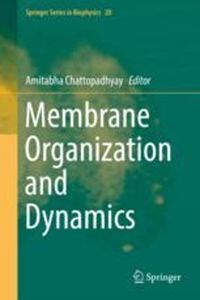Please use this identifier to cite or link to this item:
https://repositorio.uca.edu.ar/handle/123456789/8455| Título: | Spatiotemporal dynamics of nicotinic acetylcholine receptors and lipid platforms | Autor: | Barrantes, Francisco José | Palabras clave: | NEUROTRANSMISORES; MEMBRANAS CELULARES; LIPIDOS; QUIMICA CELULAR | Fecha de publicación: | 2017 | Editorial: | Springer | Cita: | Barrantes, F. J. Spatiotemporal dynamics of nicotinic acetylcholine receptors and lipid platforms [en línea]. En: Chattopadhyay, A. (eds.). Membrane organization and dynamics : Springer Series in Biophysics, vol 20. Cham : Springer, 2017. doi: 10.1007/978-3-319-66601-3_9. Disponible en: https://repositorio.uca.edu.ar/handle/123456789/8455 | Resumen: | Abstract: The relationships between neurotransmitter receptors and their membrane environment are complex, mutual (bidirectional) and physiologically important. Some of these relationships are established with subsets of the membrane lipid population, in the form of lipid platforms, lateral heterogeneities of the bilayer lipid having a dynamic chemical composition distinct from that of the bulk membrane. In addition to the equilibrium between the biosynthetic production, exocytic delivery and recycling of receptors on the one hand, and the endocytic internalization on the other, lateral diffusion, clustering and anchorage of receptors at the lipid platforms play key roles in determining the amount of active receptors at the synapse. Mobile receptors traffic between reservoir non-synaptic membranes and the synapse predominantly by thermally driven Brownian motion, and become immobilized at the perisynaptic region or the synapse proper by various mechanisms. These comprise: (a) clustering mediated by homotropic inter-molecular receptor-receptor associations; (b) heterotropic associations with non-receptor scaffolding proteins or the subjacent cytoskeletal meshwork, leading to diffusional “trapping”, and (c) protein-lipid interactions, particularly with the neutral lipid cholesterol. Preceded by a brief introduction on the currently used methods to study protein lateral mobility in membranes, this review assesses the contribution of some of these mechanisms to the supramolecular organization and dynamics of the paradigm neurotransmitter receptor of muscle and neuronal cells—the nicotinic acetylcholine receptor (nAChR). The translational mobility of nAChRs at these two cell surfaces differs in terms of diffusion coefficients and residence intervals at the synapse, which cover an ample range of time regimes. Neuronal α7 nAChRs exhibit diffusion coefficients similar to those of other neurotransmitter receptors and spend part of their lifetime confined to the perisynaptic region of glutamatergic (excitatory) and GABAergic (inhibitory) synapses; they may also be involved in the regulation of the dynamic equilibrium between excitation and inhibition in brain. | URI: | https://repositorio.uca.edu.ar/handle/123456789/8455 | ISBN: | 978-3-319-66601-3 (online) 978-3-319-66600-6 (impreso) |
Disciplina: | MEDICINA | DOI: | 10.1007/978-3-319-66601-3_9 | Derechos: | Acceso Abierto. 1 año de embargo | Fuente: | Postprint de la colaboración en la obra: Chattopadhyay, A. (eds.). Membrane organization and dynamics : Springer Series in Biophysics, vol 20. Cham : Springer, 2017 ISBN 978-3-319-66601-3 (online) ISBN 978-3-319-66600-6 (impreso) |
| Appears in Collections: | Libros o partes de libro |
Files in This Item:
| File | Description | Size | Format | |
|---|---|---|---|---|
| spatiotemporal-dynamics-nicotinic-acetylcholine.pdf | 349,64 kB | Adobe PDF |  View/Open | |
| 978-3-319-66601-3.jpg | 14,61 kB | JPEG |  View/Open |
Page view(s)
160
checked on Apr 30, 2024
Download(s)
214
checked on Apr 30, 2024
Google ScholarTM
Check
Altmetric
Altmetric
This item is licensed under a Creative Commons License

